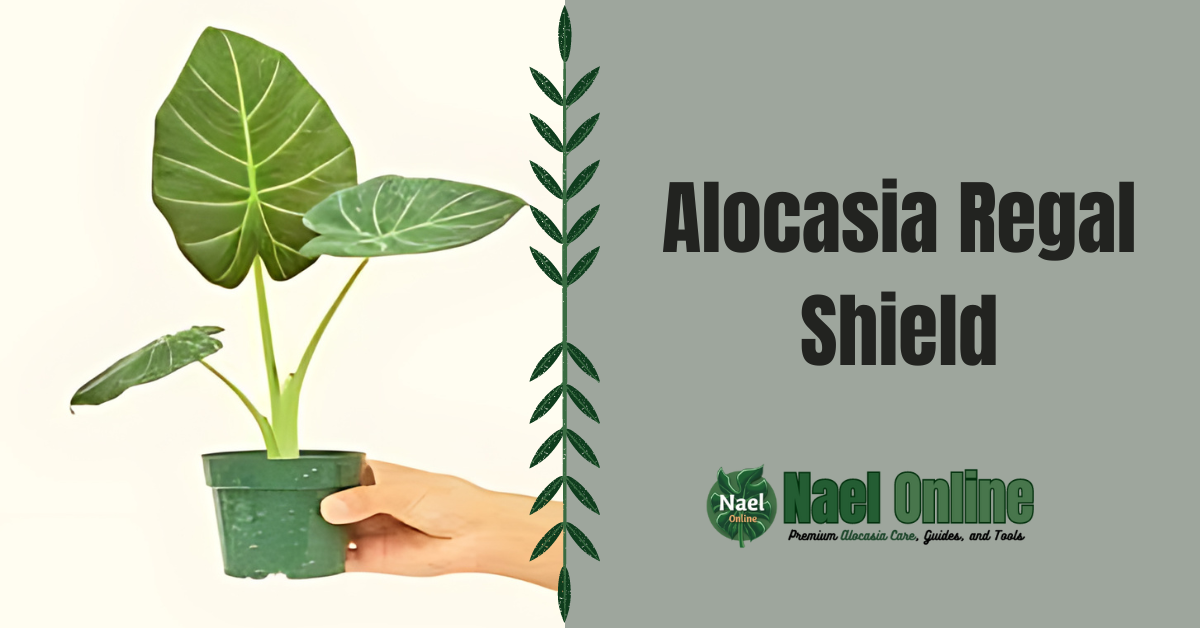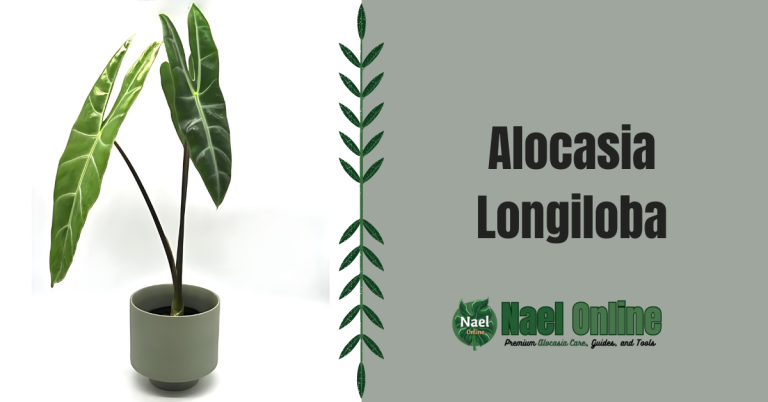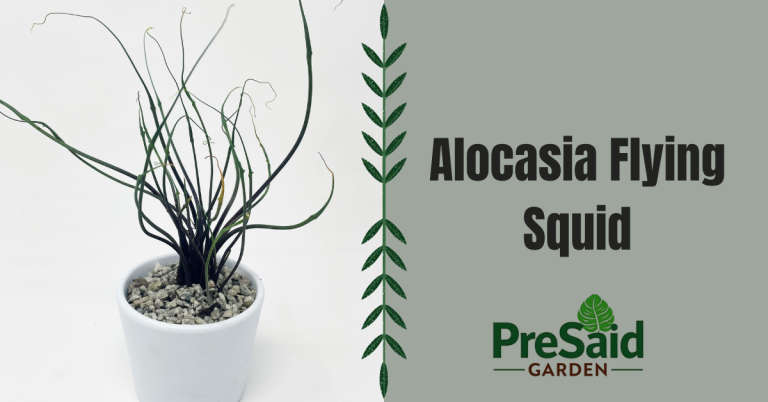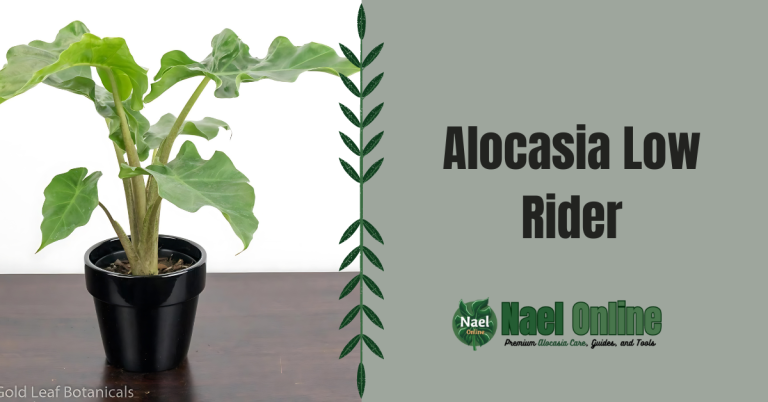Alocasia Regal Shield: Care Tips for a Thriving Plant

Hey there, plant lovers! Lucas William here from Lexivo. Today, we’re diving into the world of Alocasia Regal Shield, a stunning houseplant that’s been turning heads in the plant community. Before we get started, I want to remind you that at Lexivo, we’ve got all the gear you need to keep your Alocasia thriving.
From perfectly sized pots to top-notch pruning shears and fertilizers, we’ve got you covered. Check out our shop at https://lexivo.com.ng/shop/ to grab everything you need for your new plant baby.
Now, let’s get our hands dirty and explore the magnificent Alocasia Regal Shield!
Main Key Points
- Alocasia Regal Shield is a large, striking houseplant known for its massive, shield-shaped leaves.
- It requires high humidity, warm temperatures, and bright indirect light to thrive.
- Regular care, including proper watering and fertilization, is crucial for its health.
- Propagation is typically done through rhizome division.
- While beautiful, it’s toxic to pets and humans if ingested.
What is Alocasia Regal Shield?
Alocasia Regal Shield, also known as Alocasia ‘Regal Shields’, is a hybrid cultivar that’s part of the Alocasia genus. This impressive plant is renowned for its large, shield-shaped leaves that can grow up to 20 inches long and 14 inches wide. It’s a true statement piece that can instantly elevate any indoor space.
Alocasia Regal Shield Care Guide
| Care Aspect | Requirement |
|---|---|
| Light | Bright, indirect light |
| Water | Keep soil consistently moist, not waterlogged |
| Humidity | High (60-80%) |
| Temperature | 65-85°F (18-29°C) |
| Soil | Well-draining, rich potting mix |
| Fertilizer | Monthly during growing season |
| Propagation | Rhizome division |
| Toxicity | Toxic to pets and humans |
Origin and History
Alocasia Regal Shield is a hybrid, believed to be a cross between Alocasia odora and Alocasia reginula. While its exact origins are a bit mysterious, it’s thought to have been developed in Thailand. The plant has gained popularity in recent years due to its impressive size and striking foliage.
Common Name
This plant goes by several names, including Alocasia Regal Shield, Elephant Ear plant, and African Mask plant. The name “Regal Shield” is a nod to its large, shield-shaped leaves that give it a majestic appearance.
Scientific Name
The scientific name for this plant is Alocasia ‘Regal Shields’. The single quotes indicate that it’s a cultivar, a plant variety that has been selected for specific characteristics and is maintained through cultivation.
Benefits of Growing Alocasia Regal Shield
- Air Purification: Like many large-leaved plants, Alocasia Regal Shield can help improve indoor air quality.
- Aesthetic Appeal: Its large, dramatic leaves make a bold statement in any room.
- Humidity Booster: The plant releases moisture into the air, which can be beneficial in dry environments.
- Low Maintenance: Once you understand its needs, it’s relatively easy to care for.
Appearance and Characteristics
Alocasia Regal Shield is a sight to behold. It’s a large plant that can grow up to 3-4 feet tall and wide in ideal conditions. The leaves are its most striking feature – large, shield-shaped, and a deep green color with prominent veining. The undersides of the leaves have a purple hue, adding to its visual interest.
Unique Features
What sets Alocasia Regal Shield apart is its impressive leaf size and shape. The leaves can grow up to 20 inches long and 14 inches wide, creating a dramatic tropical effect. The contrast between the dark green top of the leaves and the purple undersides adds depth and interest to the plant’s overall appearance.
Caring and Growing Guide for Alocasia Regal Shield

After growing Alocasia Regal Shield for over a decade, I’ve learned a thing or two about keeping these beauties happy. Here’s my detailed guide to help you succeed with your own Regal Shield:
Light Requirements
Alocasia Regal Shield thrives in bright, indirect light. In its natural habitat, it grows under the canopy of larger trees, so it’s used to filtered sunlight. Too much direct sun can scorch its leaves, while too little light can lead to leggy growth and loss of its rich color.
I’ve found that an east-facing window works well. If you’re using a south or west-facing window, make sure to filter the light with a sheer curtain to protect the leaves from harsh afternoon sun.
Watering Needs
When it comes to watering your Alocasia Regal Shield, consistency is key. These plants like their soil to be consistently moist but not waterlogged. I’ve found that watering when the top inch of soil feels dry to the touch works well.
In spring and summer, you might need to water every 5-7 days, while in fall and winter, you can reduce watering to every 10-14 days. Always use room temperature water to avoid shocking the roots.
Humidity Requirements
Alocasia Regal Shield loves high humidity, ideally between 60-80%. In most homes, especially in drier climates or during winter, you’ll need to boost humidity.
I’ve had great success using a pebble tray filled with water placed under the pot. You can also use a humidifier or group your Alocasia with other humidity-loving plants. Misting can help, but be careful not to let water sit on the leaves for too long, as this can lead to fungal issues.
Temperature Preferences
Alocasia Regal Shield prefers warm temperatures between 65-85°F (18-29°C). It’s not frost-hardy and will suffer if temperatures drop below 60°F (15°C). Avoid placing it near drafty windows or air conditioning vents.
Soil and Potting
A well-draining, rich potting mix is crucial for Alocasia Regal Shield. I use a mix of 2 parts quality potting soil, 1 part perlite, and 1 part orchid bark. This combination provides the aeration and moisture retention that these plants love.
When potting, choose a container with drainage holes to prevent water from sitting at the bottom and causing root rot. Due to its size, you might need to repot your Alocasia Regal Shield every 1-2 years.
Fertilizing Schedule
During the growing season (spring and summer), I fertilize my Alocasia Regal Shield once a month with a balanced, water-soluble fertilizer diluted to half strength. In fall and winter, I reduce fertilizing to every 6-8 weeks.
Over-fertilizing can lead to salt buildup in the soil, which can damage the roots, so it’s better to err on the side of under-fertilizing than over-fertilizing.
Remember, if you need any of these care essentials, from pots to fertilizers, you can find them all at our Lexivo shop (https://lexivo.com.ng/shop/).
Detailed Propagation Guide
Propagating Alocasia Regal Shield is typically done through rhizome division. Here’s a step-by-step guide:
- Wait until your plant has produced several healthy leaves and has outgrown its current pot.
- Carefully remove the plant from its pot and gently shake off excess soil.
- Look for natural divisions in the rhizome (the thick, horizontal stem from which roots and leaves grow).
- Using a clean, sharp knife, carefully separate the rhizome, ensuring each division has at least one healthy leaf and some roots.
- Pot each division in a small container with fresh, well-draining potting mix.
- Keep the newly potted divisions in a warm, humid environment with bright, indirect light.
- Water sparingly at first, gradually increasing as you see new growth.
Remember, Alocasia Regal Shield can be slow to establish after division, so be patient and maintain consistent care.
Detailed Pruning Guide
Pruning isn’t typically necessary for Alocasia Regal Shield, but you may need to remove dead or yellowing leaves to maintain the plant’s appearance and health.
- Use clean, sharp scissors or pruning shears to avoid damaging the plant.
- Cut yellowing or dead leaves at the base of the stem, as close to the soil as possible.
- If you notice any damaged or diseased leaves, remove them promptly to prevent issues from spreading.
- After pruning, avoid fertilizing for a few weeks to allow the plant to recover.
Detailed Repotting Guide
Alocasia Regal Shield grows quickly and may need repotting every 1-2 years. Here’s how to do it:
- Choose a pot that’s 2-3 inches larger in diameter than the current one.
- Gently remove the plant from its current pot, being careful not to damage the roots.
- Shake off excess soil and inspect the roots, trimming any that appear dead or rotted.
- Place fresh potting mix in the new pot, position your Alocasia, and fill in around the roots.
- Water thoroughly and place in a warm, humid spot with indirect light.
- Hold off on fertilizing for about a month to allow the plant to adjust to its new home.
Toxicity
It’s important to note that Alocasia Regal Shield, like other Alocasia species, is toxic if ingested. The plant contains calcium oxalate crystals, which can cause severe irritation and swelling in the mouth and digestive tract.
Keep this plant out of reach of children and pets. If ingestion occurs, seek medical attention immediately.
Common Pests and Diseases
While Alocasia Regal Shield is generally hardy, it can fall prey to a few common issues:
- Spider Mites: These tiny pests love the large leaves. Look for fine webbing and treat with neem oil or insecticidal soap.
- Mealybugs: These white, cottony pests can infest the leaves and stems. Remove them with a cotton swab dipped in rubbing alcohol.
- Root Rot: Caused by overwatering or poor drainage. Prevent by ensuring proper watering and using well-draining soil.
- Leaf Spot: Fungal disease causing brown spots on leaves. Improve air circulation and avoid getting water on the leaves.
Regular inspection and prompt treatment are key to keeping your Alocasia Regal Shield healthy and thriving.
Comparison with Other Alocasia Species and Varieties
Alocasia Regal Shield stands out among its relatives for its large size and impressive foliage. Here’s how it compares to some other popular Alocasia species:
- Alocasia Polly (Alocasia x amazonica): Smaller leaves with more pronounced arrow shape and lighter green color.
- Alocasia Zebrina: Known for its zebra-striped stems rather than its leaf size.
- Alocasia Frydek: Similar dark leaves but smaller in size with more pronounced white veins.
- Alocasia Stingray: Unique leaf shape resembling a stingray, smaller than Regal Shield.
While each of these Alocasias has its own charm, the Regal Shield’s impressive size and bold leaves make it a standout in any plant collection.
Frequently Asked Questions
1. Why are my Alocasia Regal Shield’s leaves drooping?
Drooping leaves can be a sign of underwatering, low humidity, or temperature stress. Check your watering schedule, increase humidity if needed, and ensure the plant isn’t exposed to cold drafts.
2. Can Alocasia Regal Shield grow in low light conditions?
While Alocasia Regal Shield can tolerate lower light, it won’t thrive. In low light, you may notice slower growth, smaller leaves, and loss of the rich color. For best results, provide bright, indirect light.
3. How often should I clean the leaves of my Alocasia Regal Shield?
Dust can accumulate on the large leaves, blocking light absorption. Gently wipe the leaves with a soft, damp cloth every few weeks to keep them clean and healthy.
4. My Alocasia Regal Shield isn’t growing new leaves. What’s wrong?
Slow or stalled growth is common during fall and winter when the plant goes into dormancy. Ensure it’s getting enough light and maintain consistent care. New growth should resume in spring.
5. Can I grow Alocasia Regal Shield outdoors?
In USDA zones 10-11, you can grow Alocasia Regal Shield outdoors in a shaded area. For most of us in the U.S., it’s best kept as an indoor plant due to its tropical nature and inability to withstand cold temperatures.
And there you have it, folks! Everything you need to know about growing and caring for the stunning Alocasia Regal Shield. Remember, patience and consistency are key when it comes to these beautiful plants. With the right care, your Regal Shield will reward you with its impressive, shield-shaped leaves for years to come.
Don’t forget to check out our shop at Lexivo (https://lexivo.com.ng/shop/) for all your plant care needs. We’ve got everything from the perfect pots to specialized Alocasia fertilizers to help your Regal Shield thrive.
Happy planting, and may your Alocasia Regal Shield bring a touch of tropical majesty to your home!






